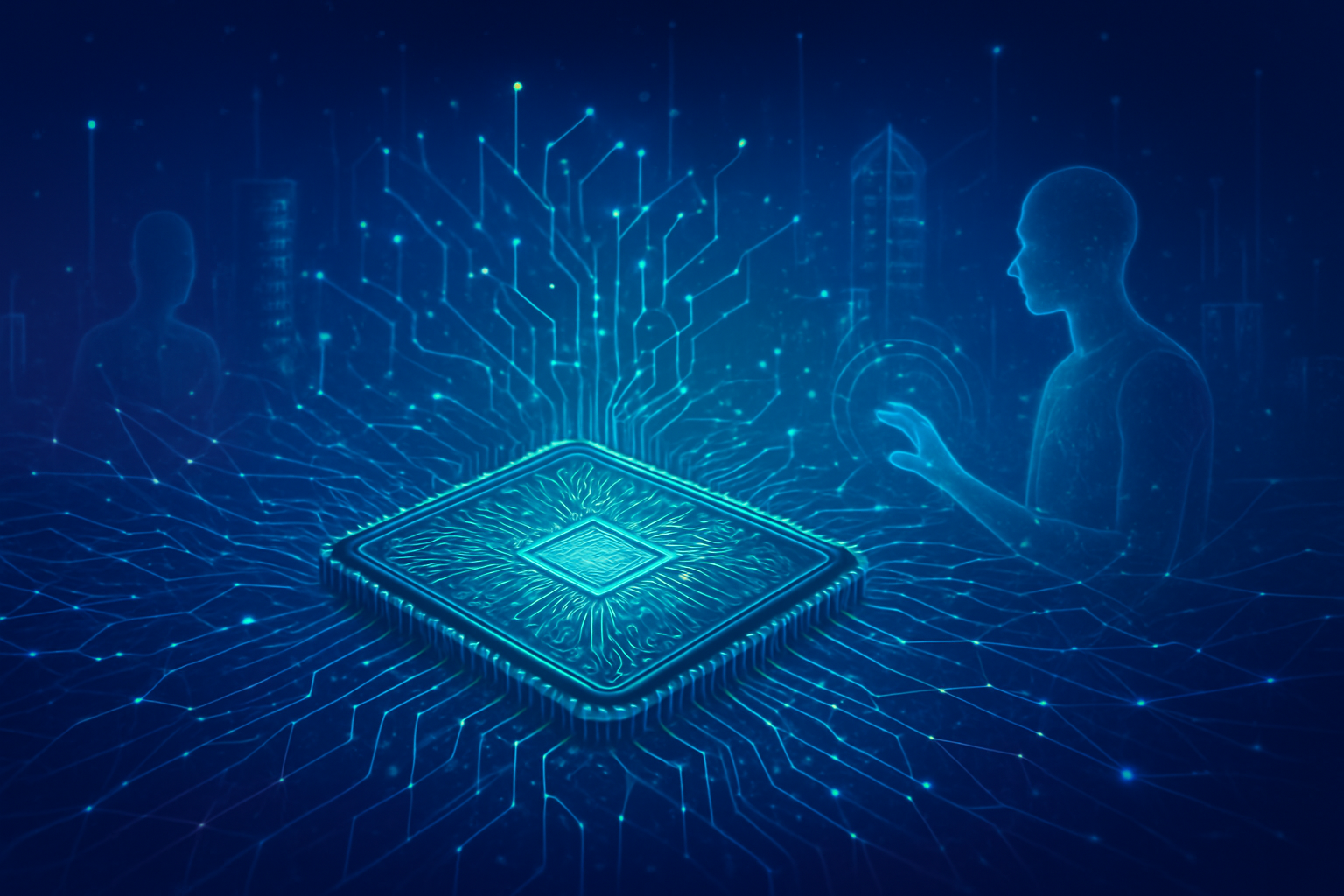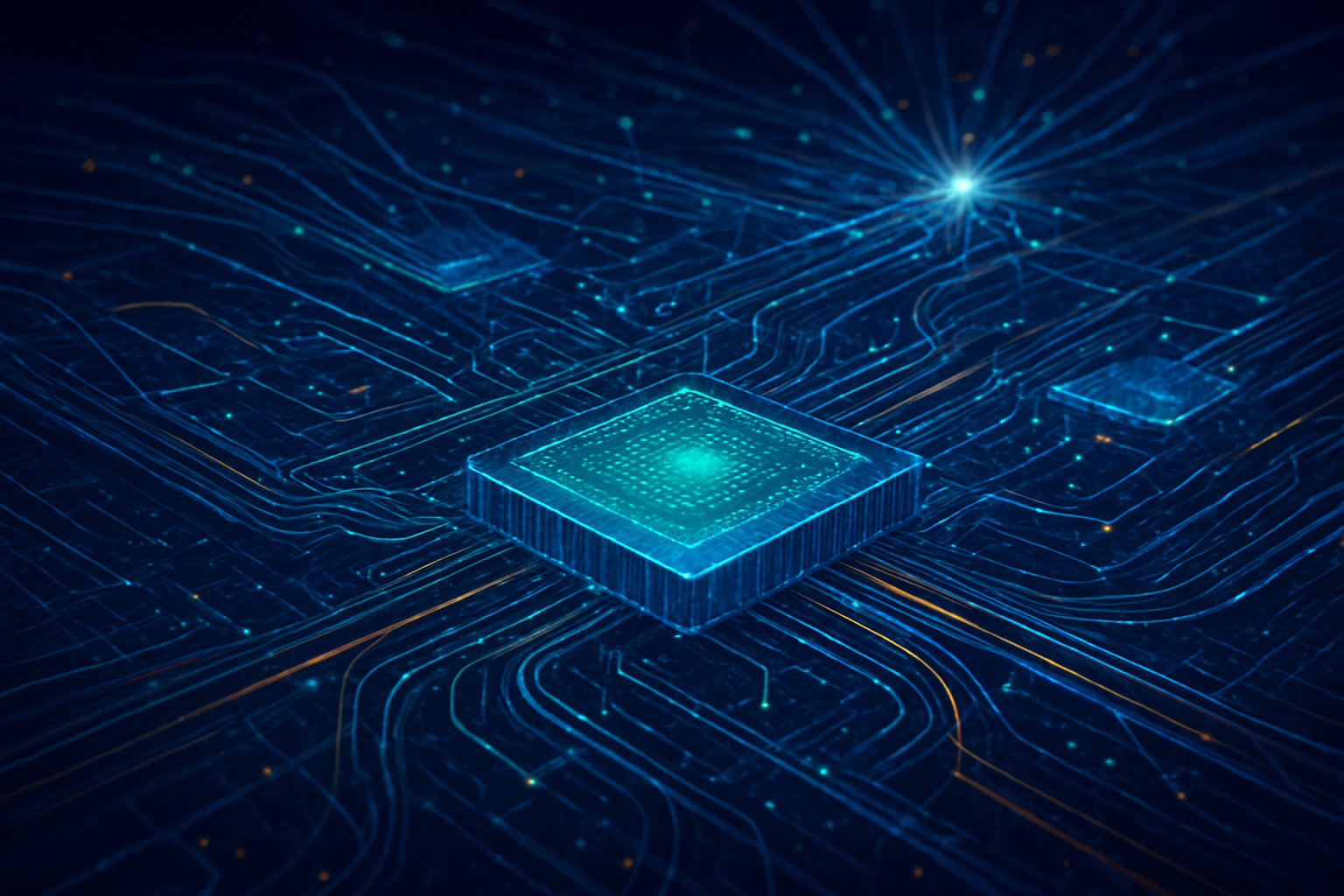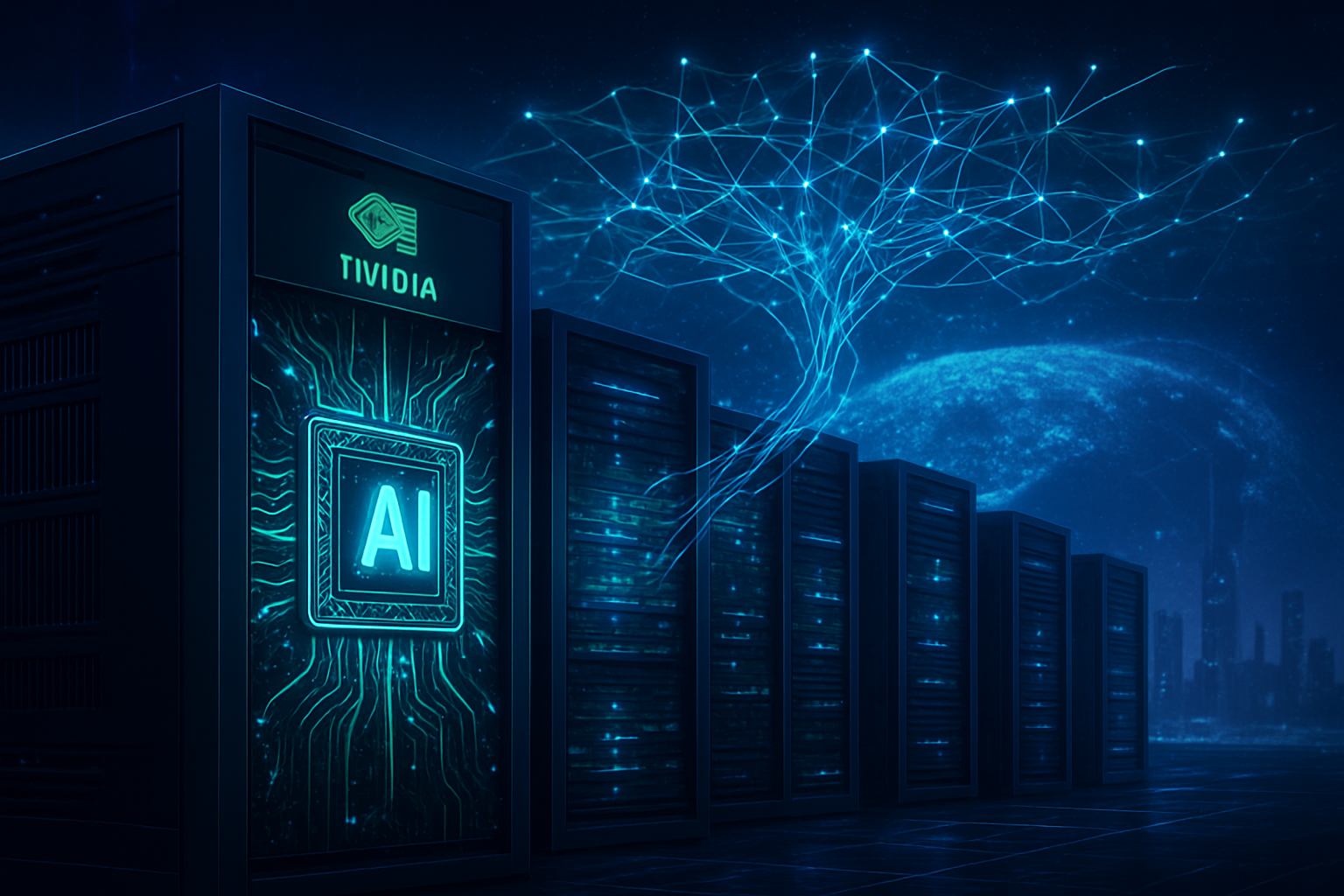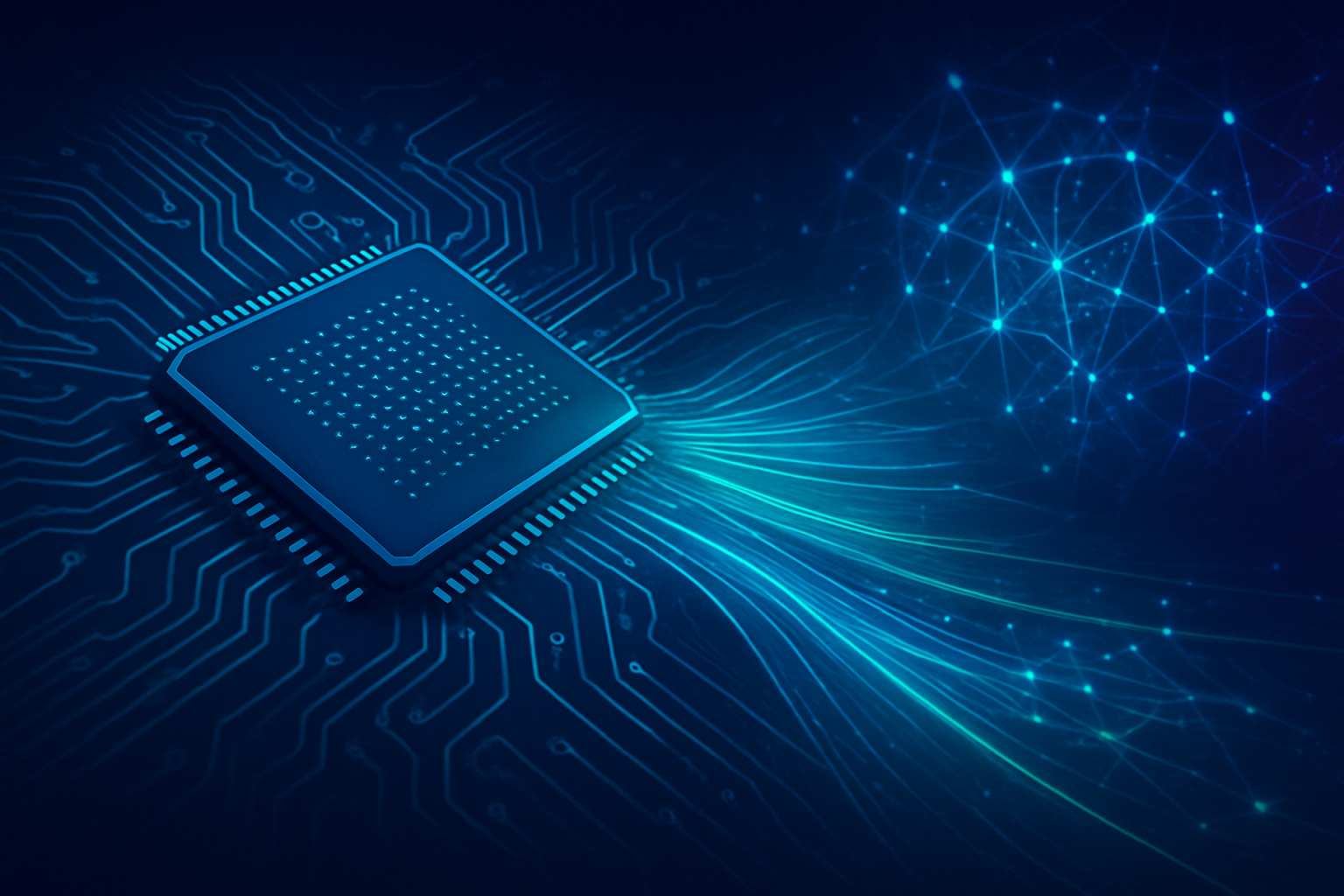The corporate world is in the midst of a profound transformation, with Artificial Intelligence (AI) rapidly transitioning from an experimental technology to an indispensable strategic asset. Businesses across diverse sectors are aggressively integrating AI solutions, driven by an undeniable imperative to boost profitability, enhance operational efficiency, and secure a competitive edge in a rapidly evolving global market. This widespread adoption signifies a new era where AI is not merely a tool but a foundational teammate, reshaping core functions and creating unprecedented value.
The immediate significance of this shift is multifaceted. Companies are experiencing accelerated returns on investment (ROI) from AI initiatives, with some reporting an 80% reduction in time-to-ROI. AI is fundamentally reshaping business operations, from strategic planning to daily task execution, leading to significant increases in revenue per employee—sometimes three times higher in AI-exposed companies. This proactive embrace of AI is driven by its proven ability to generate revenue through smarter pricing, enhanced customer experience, and new business opportunities, while simultaneously cutting costs and improving efficiency through automation, predictive maintenance, and optimized supply chains.
AI's Technical Evolution: From Automation to Autonomous Agents
The current wave of corporate AI adoption is powered by sophisticated advancements that far surpass previous technological approaches. These AI systems are characterized by their ability to learn, adapt, and make data-driven decisions with unparalleled precision and speed.
One of the most impactful areas is AI in Supply Chain Management. Corporations are deploying AI for demand forecasting, inventory optimization, and network design. Technically, this involves leveraging machine learning (ML) algorithms to analyze vast datasets, market conditions, and even geopolitical events for predictive analytics. For instance, Nike (NYSE: NKE) uses AI to forecast demand by pulling insights from past sales, market shifts, and economic changes. The integration of IoT sensors with ML, as seen in Maersk's (CPH: MAERSK-B) Remote Container Management (RCM), allows for continuous monitoring of conditions. This differs from traditional rule-based systems by offering real-time data processing, identifying subtle patterns, and providing dynamic, adaptive solutions that improve accuracy and reduce inventory costs by up to 35%.
AI in Customer Service has also seen a revolution. AI-powered chatbots and virtual assistants utilize Natural Language Processing (NLP) and Natural Language Understanding (NLU) to interpret customer intent, sentiment, and context, enabling them to manage high volumes of inquiries and provide personalized responses. Companies like Salesforce (NYSE: CRM) are introducing "agentic AI" systems, such as Agentforce, which can converse with customers, synthesize data, and autonomously execute actions like processing payments or checking for fraud. This represents a significant leap from rigid Interactive Voice Response (IVR) menus and basic scripted chatbots, offering more dynamic, conversational, and empathetic interactions, reducing wait times, and improving first contact resolution.
In Healthcare, AI is rapidly adopted for diagnostics and administrative tasks. Google Health (NASDAQ: GOOGL) has developed algorithms that identify lung cancer from CT scans with greater precision than radiologists, while other AI algorithms have improved breast cancer detection by 9.4%. This is achieved through machine learning and deep learning models trained on extensive medical image datasets and computer vision for analyzing MRIs, X-rays, and ultrasounds. Oracle Health (NYSE: ORCL) uses AI in its Electronic Health Record (EHR) systems for enhanced data accuracy and workflow streamlining. This differs from traditional diagnostic processes, which were heavily reliant on human interpretation, by enhancing accuracy, reducing medical errors, and automating time-consuming administrative operations.
Initial reactions from the AI research community and industry experts are a mix of optimism and concern. While 56% of experts believe AI will positively affect the U.S. over the next 20 years, there are significant concerns about job displacement and the ethical implications of AI. The increasing dominance of industry in cutting-edge AI research, driven by the enormous resources required, raises fears that research priorities might be steered towards profit maximization rather than broader societal needs. There is a strong call for robust ethical guidelines, compliance protocols, and regulatory frameworks to ensure responsible AI development and deployment.
Reshaping the Tech Landscape: Giants, Specialists, and Disruptors
The increasing corporate adoption of AI is profoundly reshaping the tech industry, creating a dynamic landscape where AI companies, tech giants, and startups face both unprecedented opportunities and significant competitive pressures.
Hyperscalers and Cloud Providers like Microsoft Azure (NASDAQ: MSFT), Google Cloud (NASDAQ: GOOGL), and Amazon Web Services (AWS) (NASDAQ: AMZN) are unequivocally benefiting. They are experiencing massive capital expenditures on cloud and data centers as enterprises migrate their AI workloads. Their cloud platforms provide scalable and affordable AI-as-a-Service solutions, democratizing AI access for smaller businesses. These tech giants are investing billions in AI infrastructure, talent, models, and applications to streamline processes, scale products, and protect their market positions. Microsoft, for instance, is tripling its AI investments and integrating AI into its Azure cloud platform to drive business transformation.
Major AI Labs and Model Developers such as OpenAI, Anthropic, and Google DeepMind (NASDAQ: GOOGL) are at the forefront, driving foundational advancements, particularly in large language models (LLMs) and generative AI. Companies like OpenAI have transitioned from research labs to multi-billion dollar enterprise vendors, with paying enterprises driving significant revenue growth. These entities are creating the cutting-edge models that are then adopted by enterprises across diverse industries, leading to substantial revenue growth and high valuations.
For Startups, AI adoption presents a dual scenario. AI-native startups are emerging rapidly, unencumbered by legacy systems, and are quickly gaining traction and funding by offering innovative AI applications. Some are reaching billion-dollar valuations with lean teams, thanks to AI accelerating coding and product development. Conversely, traditional startups face the imperative to integrate AI to remain competitive, often leveraging AI tools for enhanced customer insights and operational scalability. However, they may struggle with high implementation costs and limited access to quality data.
The competitive landscape is intensifying, creating an "AI arms race" where investments in AI infrastructure, research, and development are paramount. Companies with rich, proprietary datasets, such as Google (NASDAQ: GOOGL) with its search data or Amazon (NASDAQ: AMZN) with its e-commerce data, possess a significant advantage in training superior AI models. AI is poised to disrupt existing software categories, with the emergence of "agentic AI" systems threatening to replace certain software applications entirely. However, AI also creates new revenue opportunities, expanding the software market by enabling new capabilities and enhancing existing products with intelligent features, as seen with Adobe (NASDAQ: ADBE) Firefly or Microsoft (NASDAQ: MSFT) Copilot.
A New Era: AI's Wider Significance and Societal Crossroads
The increasing corporate adoption of AI marks a pivotal moment in the broader AI landscape, signaling a shift from experimental technology to a fundamental driver of economic and societal change. This era, often dubbed an "AI boom," is characterized by an unprecedented pace of adoption, particularly with generative AI technologies like ChatGPT, which achieved nearly 40% adoption in just two years—a milestone that took the internet five years and personal computing nearly twelve.
Economically, AI is projected to add trillions of dollars to the global economy, with generative AI alone potentially contributing an additional $2.6 trillion to $4.4 trillion annually. This is largely driven by significant productivity growth, with AI potentially adding 0.1 to 0.6 percentage points annually to global productivity through 2040. AI fosters continuous innovation, leading to the development of new products, services, and entire industries. It also transforms the workforce; while concerns about job displacement persist, AI is also making workers more valuable, leading to wage increases in AI-exposed industries and creating new roles that demand unique human skills.
However, this rapid integration comes with significant concerns. Ethical implications are at the forefront, including algorithmic bias and discrimination embedded in AI systems trained on imperfect data, leading to unfair outcomes in areas like hiring or lending. The "black box" nature of many AI models raises issues of transparency and accountability, making it difficult to understand how decisions are made. Data privacy and cybersecurity are also critical concerns, as AI systems often handle vast amounts of sensitive data. The potential for AI to spread misinformation and manipulate public opinion through deepfake technologies also poses a serious societal risk.
Job displacement is another major concern. AI can automate a range of routine tasks, particularly in knowledge work, with some estimates suggesting that half of today's work activities could be automated between 2030 and 2060. Occupations like computer programmers, accountants, and administrative assistants are at higher risk. While experts predict that new job opportunities created by the technology will ultimately absorb displaced workers, there will be a crucial need for massive reskilling and upskilling initiatives to prepare the workforce for an AI-integrated future.
Compared to previous AI milestones, such as the development of "expert systems" in the 1980s or AlphaGo defeating a world champion Go player in 2016, the current era of corporate AI adoption, driven by foundation models and generative AI, is distinct. These models can process vast and varied unstructured data, perform multiple tasks, and exhibit human-like traits of knowledge and creativity. This broad utility and rapid adoption rate signal a more immediate and pervasive impact on corporate practices and society at large, marking a true "step change" in AI history.
The Horizon: Autonomous Agents and Strategic AI Maturity
The future of corporate AI adoption promises even more profound transformations, with expected near-term and long-term developments pushing the boundaries of what AI can achieve within business contexts.
In the near term, the focus will be on scaling AI initiatives beyond pilot projects to full enterprise-wide applications, with a clear shift towards targeted solutions for high-value business problems. Generative AI will continue its rapid evolution, not just creating text and images, but also generating code, music, video, and 3D designs, enabling hyper-personalized marketing and product development at scale. A significant development on the horizon is the rise of Agentic AI systems. These autonomous AI agents will be capable of making decisions and taking actions within defined boundaries, learning and improving over time. They are expected to manage complex operational tasks, automate entire sales processes, and even handle adaptive workflow automation, potentially leading to a "team of agents" working for individuals and businesses.
Looking further ahead, AI is poised to become an intrinsic part of organizational dynamics, redefining customer experiences and internal operations. Machine learning and predictive analytics will continue to drive data-driven decisions across all sectors, from demand forecasting and inventory optimization to risk assessment and fraud detection. AI in cybersecurity will become an even more critical defense layer, using machine learning to detect suspicious behavior and stop attacks in real-time. Furthermore, Edge AI, processing data on local devices, will lead to faster decisions, greater data privacy, and real-time operations in automotive, smart factories, and IoT. AI will also play a growing role in corporate sustainability, optimizing energy consumption and resource utilization.
However, several challenges must be addressed for widespread and responsible AI integration. Cultural resistance and skill gaps among employees, often stemming from fear of job displacement or lack of AI literacy, remain significant hurdles. Companies must foster a culture of transparency, continuous learning, and targeted upskilling. Regulatory complexity and compliance risks are rapidly evolving, with frameworks like the EU AI Act necessitating robust AI governance. Bias and fairness in AI models, data privacy, and security concerns also demand continuous attention and mitigation strategies. The high costs of AI implementation and the struggle to integrate modern AI solutions with legacy systems are also major barriers for many organizations.
Experts widely predict that AI investments will shift from mere experimentation to decisive execution, with a strong focus on demonstrating tangible ROI. The rise of AI agents is expected to become standard, making humans more productive by automating repetitive tasks and providing real-time insights. Responsible AI practices, including transparency, trust, and security, will be paramount and directly influence the success of AI initiatives. The future will involve continuous workforce upskilling, robust AI governance, and a strategic approach that leads with trust to drive transformative outcomes.
The AI Revolution: A Strategic Imperative for the Future
The increasing corporate adoption of AI for profitability and operational efficiency marks a transformative chapter in technological history. It is a strategic imperative, not merely an optional upgrade, profoundly reshaping how businesses operate, innovate, and compete.
The key takeaways are clear: AI is driving unprecedented productivity gains, significant revenue growth, and substantial cost reductions across industries. Generative AI, in particular, has seen an exceptionally rapid adoption rate, quickly becoming a core business tool. While the promise is immense, successful implementation hinges on overcoming challenges related to data quality, workforce skill gaps, and organizational readiness, emphasizing the need for a holistic, people-centric approach.
This development holds immense significance in AI history, representing a shift from isolated breakthroughs to widespread, integrated commercial application. The speed of adoption, especially for generative AI, is a testament to its immediate and tangible value, setting it apart from previous technological revolutions. AI is transitioning from a specialized tool to a critical business infrastructure, requiring companies to rethink entire systems around its capabilities.
The long-term impact will be nothing short of an economic transformation, with AI projected to significantly boost global GDP, redefine business models, and evolve the nature of work. While concerns about job displacement are valid, the emphasis will increasingly be on AI augmenting human capabilities, creating new roles, and increasing the value of human labor. Ethical considerations, transparent governance, and sustainable AI practices will be crucial for navigating this future responsibly.
In the coming weeks and months, watch for the continued advancement of sophisticated generative and agentic AI models, moving towards more autonomous and specialized applications. The focus will intensify on scaling AI initiatives and demonstrating clear ROI, pushing companies to invest heavily in workforce transformation and skill development. Expect the regulatory landscape to mature, demanding proactive adaptation from businesses. The foundation of robust data infrastructure and strategic AI maturity will be critical differentiators. Organizations that navigate this AI-driven era with foresight, strategic planning, and a commitment to responsible innovation are poised to lead the charge into an AI-dominated future.
This content is intended for informational purposes only and represents analysis of current AI developments.
TokenRing AI delivers enterprise-grade solutions for multi-agent AI workflow orchestration, AI-powered development tools, and seamless remote collaboration platforms.
For more information, visit https://www.tokenring.ai/.









